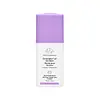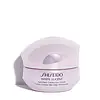What's inside
What's inside
 Key Ingredients
Key Ingredients

 Benefits
Benefits

 Concerns
Concerns

 Ingredients Side-by-side
Ingredients Side-by-side

Water
Skin ConditioningOctyldodecanol
EmollientGlycerin
HumectantSclerocarya Birrea Seed Butter
EmollientLinoleic Acid
CleansingGlyceryl Stearate
EmollientPalmitic Acid
EmollientPentylene Glycol
Skin ConditioningCetearyl Alcohol
EmollientStearic Acid
CleansingSclerocarya Birrea Seed Oil
HumectantPersea Gratissima Oil
Skin ConditioningAvena Sativa Kernel Oil
Skin ConditioningOenothera Biennis Oil
EmollientLinum Usitatissimum Seed Oil
PerfumingSalvia Hispanica Seed Oil
MoisturisingSimmondsia Chinensis Seed Oil
EmollientCeramide AP
Skin ConditioningCeramide NP
Skin ConditioningCeramide EOP
Skin ConditioningAvena Sativa Kernel Extract
AbrasivePanthenol
Skin ConditioningLinolenic Acid
CleansingAdenosine
Skin ConditioningBeta-Glucan
Skin ConditioningQuercetin
AntioxidantAllantoin
Skin ConditioningSodium Lauroyl Lactylate
EmulsifyingPhytosphingosine
Skin ConditioningCholesterol
EmollientXanthan Gum
EmulsifyingTetrasodium Glutamate Diacetate
Propanediol
SolventCitric Acid
BufferingCeteareth-20
CleansingSodium Carbonate
BufferingPhenoxyethanol
PreservativeSodium Chloride
MaskingCaprylyl Glycol
EmollientSodium Hydroxide
BufferingChlorphenesin
AntimicrobialCarbomer
Emulsion StabilisingEthylhexylglycerin
Skin ConditioningWater, Octyldodecanol, Glycerin, Sclerocarya Birrea Seed Butter, Linoleic Acid, Glyceryl Stearate, Palmitic Acid, Pentylene Glycol, Cetearyl Alcohol, Stearic Acid, Sclerocarya Birrea Seed Oil, Persea Gratissima Oil, Avena Sativa Kernel Oil, Oenothera Biennis Oil, Linum Usitatissimum Seed Oil, Salvia Hispanica Seed Oil, Simmondsia Chinensis Seed Oil, Ceramide AP, Ceramide NP, Ceramide EOP, Avena Sativa Kernel Extract, Panthenol, Linolenic Acid, Adenosine, Beta-Glucan, Quercetin, Allantoin, Sodium Lauroyl Lactylate, Phytosphingosine, Cholesterol, Xanthan Gum, Tetrasodium Glutamate Diacetate, Propanediol, Citric Acid, Ceteareth-20, Sodium Carbonate, Phenoxyethanol, Sodium Chloride, Caprylyl Glycol, Sodium Hydroxide, Chlorphenesin, Carbomer, Ethylhexylglycerin
Water
Skin ConditioningDimethicone
EmollientButylene Glycol
HumectantGlycerin
HumectantAlcohol
AntimicrobialDimethicone/Vinyl Dimethicone Crosspolymer
Skin ConditioningMyristyl Myristate
EmollientPetrolatum
EmollientHydrogenated Polydecene
EmollientBehenyl Alcohol
EmollientCetyl Ethylhexanoate
EmollientGlyceryl Stearate Se
EmulsifyingPotassium Methoxysalicylate
BleachingMethyl Methacrylate Crosspolymer
Stearyl Alcohol
EmollientDimethylacrylamide/Sodium Acryloyldimethyltaurate Crosspolymer
Polysorbate 60
EmulsifyingPEG-40 Stearate
EmulsifyingTocopheryl Acetate
AntioxidantPhenoxyethanol
PreservativeCI 77891
Cosmetic ColorantParfum
MaskingSorbitan Tristearate
EmulsifyingTrisodium EDTA
PEG-10 Dimethicone
Skin ConditioningSodium Citrate
BufferingOryzanol
Skin Conditioning2-O-Ethyl Ascorbic Acid
Skin ConditioningMica
Cosmetic ColorantSilica
AbrasiveXanthan Gum
EmulsifyingSodium Metaphosphate
BufferingLimonene
PerfumingCitric Acid
BufferingPEG/PPG-14/7 Dimethyl Ether
Skin ConditioningAluminum Hydroxide
EmollientBenzyl Benzoate
AntimicrobialButylphenyl Methylpropional
PerfumingCI 77491
Cosmetic ColorantLinalool
PerfumingSodium Hyaluronate
HumectantCitronellol
PerfumingCrataegus Monogyna Flower Extract
Skin ConditioningTocopherol
AntioxidantWater, Dimethicone, Butylene Glycol, Glycerin, Alcohol, Dimethicone/Vinyl Dimethicone Crosspolymer, Myristyl Myristate, Petrolatum, Hydrogenated Polydecene, Behenyl Alcohol, Cetyl Ethylhexanoate, Glyceryl Stearate Se, Potassium Methoxysalicylate, Methyl Methacrylate Crosspolymer, Stearyl Alcohol, Dimethylacrylamide/Sodium Acryloyldimethyltaurate Crosspolymer, Polysorbate 60, PEG-40 Stearate, Tocopheryl Acetate, Phenoxyethanol, CI 77891, Parfum, Sorbitan Tristearate, Trisodium EDTA, PEG-10 Dimethicone, Sodium Citrate, Oryzanol, 2-O-Ethyl Ascorbic Acid, Mica, Silica, Xanthan Gum, Sodium Metaphosphate, Limonene, Citric Acid, PEG/PPG-14/7 Dimethyl Ether, Aluminum Hydroxide, Benzyl Benzoate, Butylphenyl Methylpropional, CI 77491, Linalool, Sodium Hyaluronate, Citronellol, Crataegus Monogyna Flower Extract, Tocopherol
 Reviews
Reviews

Ingredients Explained
These ingredients are found in both products.
Ingredients higher up in an ingredient list are typically present in a larger amount.
Citric Acid is an alpha hydroxy acid (AHA) naturally found in citrus fruits like oranges, lemons, and limes.
Like other AHAs, citric acid can exfoliate skin by breaking down the bonds that hold dead skin cells together. This helps reveal smoother and brighter skin underneath.
However, this exfoliating effect only happens at high concentrations (20%) which can be hard to find in cosmetic products.
Due to this, citric acid is usually included in small amounts as a pH adjuster. This helps keep products slightly more acidic and compatible with skin's natural pH.
In skincare formulas, citric acid can:
While it can provide some skin benefits, research shows lactic acid and glycolic acid are generally more effective and less irritating exfoliants.
Most citric acid used in skincare today is made by fermenting sugars (usually from molasses). This synthetic version is identical to the natural citrus form but easier to stabilize and use in formulations.
Read more about some other popular AHA's here:
Learn more about Citric AcidGlycerin is already naturally found in your skin. It helps moisturize and protect your skin.
A study from 2016 found glycerin to be more effective as a humectant than AHAs and hyaluronic acid.
As a humectant, it helps the skin stay hydrated by pulling moisture to your skin. The low molecular weight of glycerin allows it to pull moisture into the deeper layers of your skin.
Hydrated skin improves your skin barrier; Your skin barrier helps protect against irritants and bacteria.
Glycerin has also been found to have antimicrobial and antiviral properties. Due to these properties, glycerin is often used in wound and burn treatments.
In cosmetics, glycerin is usually derived from plants such as soybean or palm. However, it can also be sourced from animals, such as tallow or animal fat.
This ingredient is organic, colorless, odorless, and non-toxic.
Glycerin is the name for this ingredient in American English. British English uses Glycerol/Glycerine.
Learn more about GlycerinPhenoxyethanol is a preservative that has germicide, antimicrobial, and aromatic properties. Studies show that phenoxyethanol can prevent microbial growth. By itself, it has a scent that is similar to that of a rose.
It's often used in formulations along with Caprylyl Glycol to preserve the shelf life of products.
Water. It's the most common cosmetic ingredient of all. You'll usually see it at the top of ingredient lists, meaning that it makes up the largest part of the product.
So why is it so popular? Water most often acts as a solvent - this means that it helps dissolve other ingredients into the formulation.
You'll also recognize water as that liquid we all need to stay alive. If you see this, drink a glass of water. Stay hydrated!
Learn more about WaterXanthan gum is used as a stabilizer and thickener within cosmetic products. It helps give products a sticky, thick feeling - preventing them from being too runny.
On the technical side of things, xanthan gum is a polysaccharide - a combination consisting of multiple sugar molecules bonded together.
Xanthan gum is a pretty common and great ingredient. It is a natural, non-toxic, non-irritating ingredient that is also commonly used in food products.
Learn more about Xanthan Gum